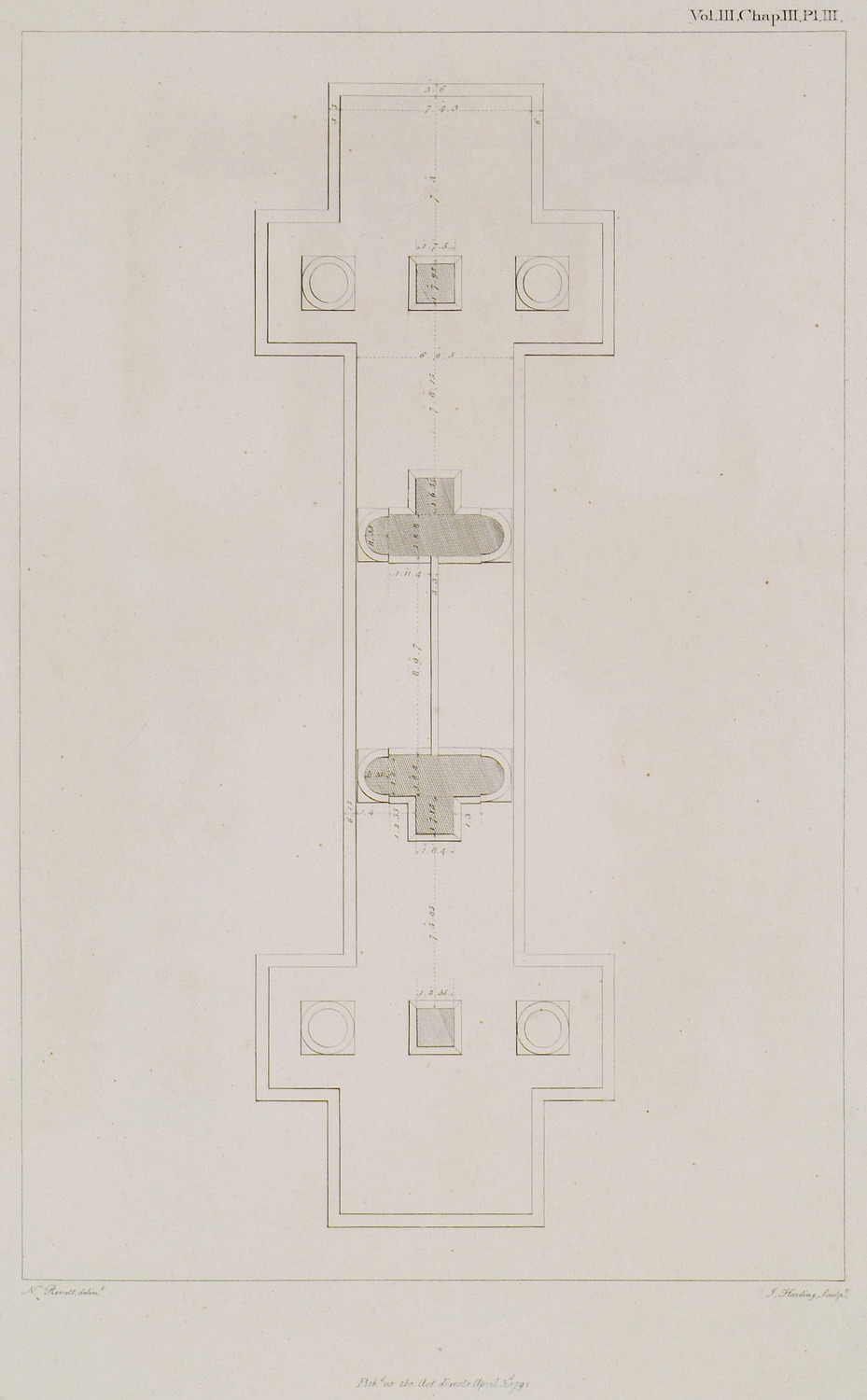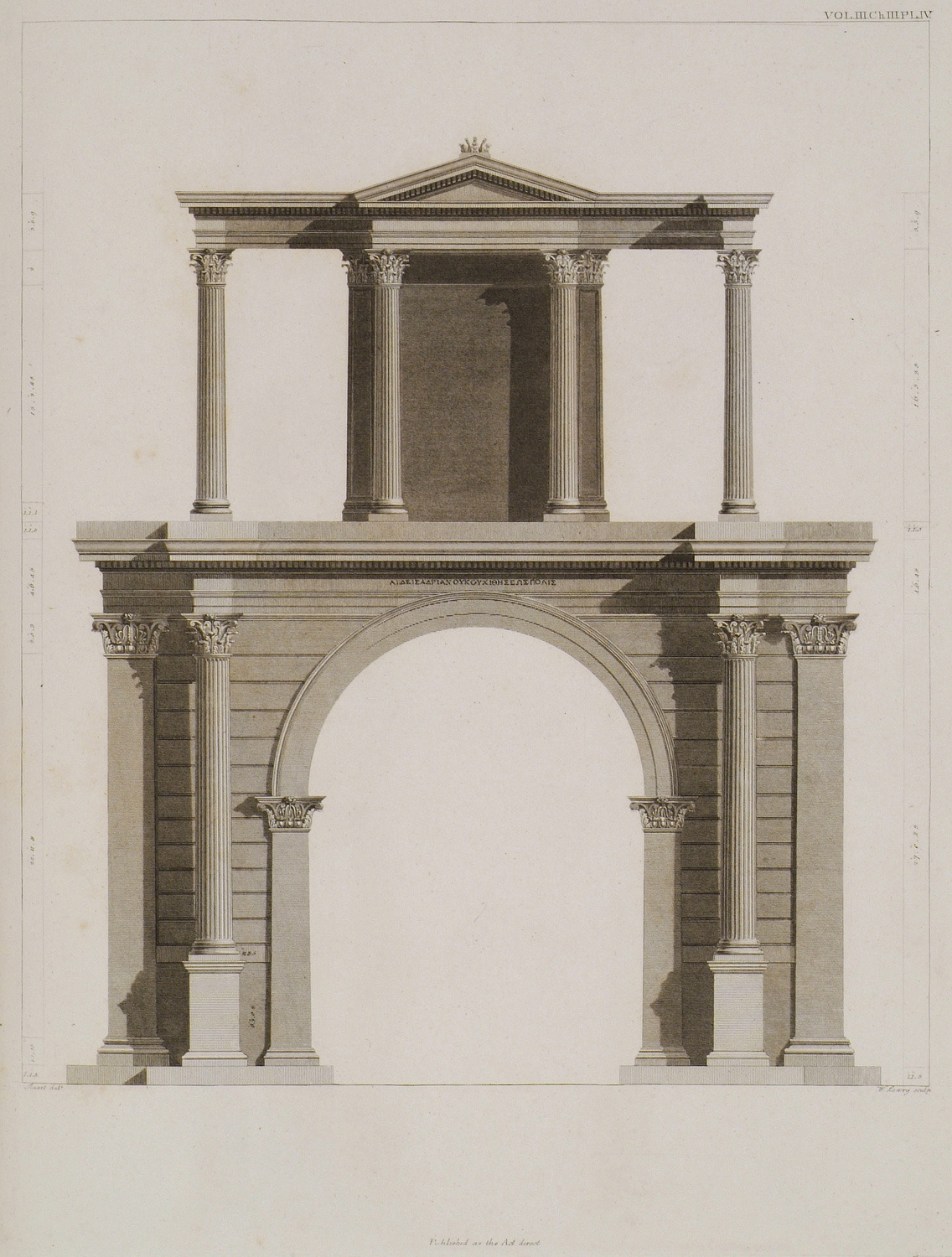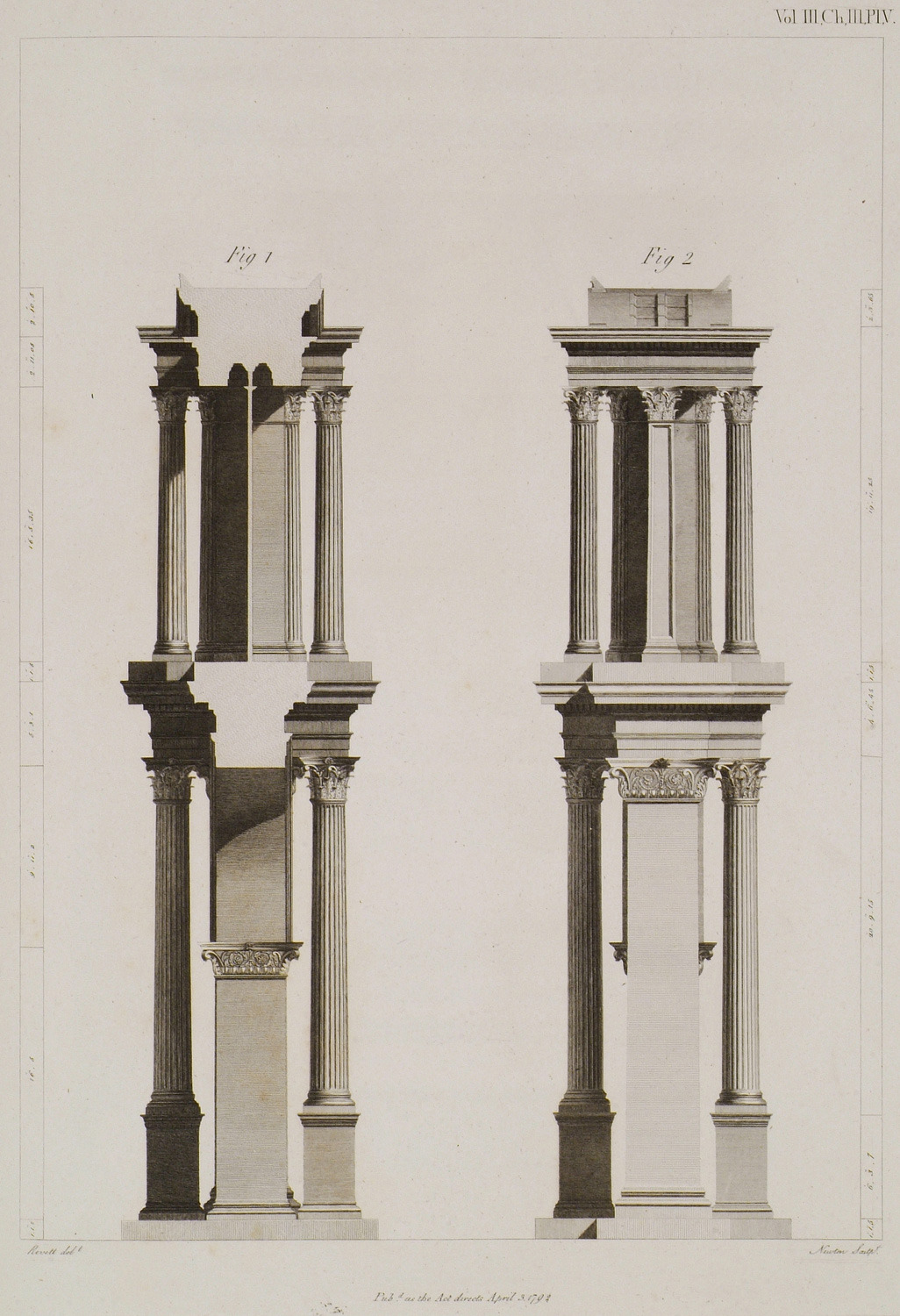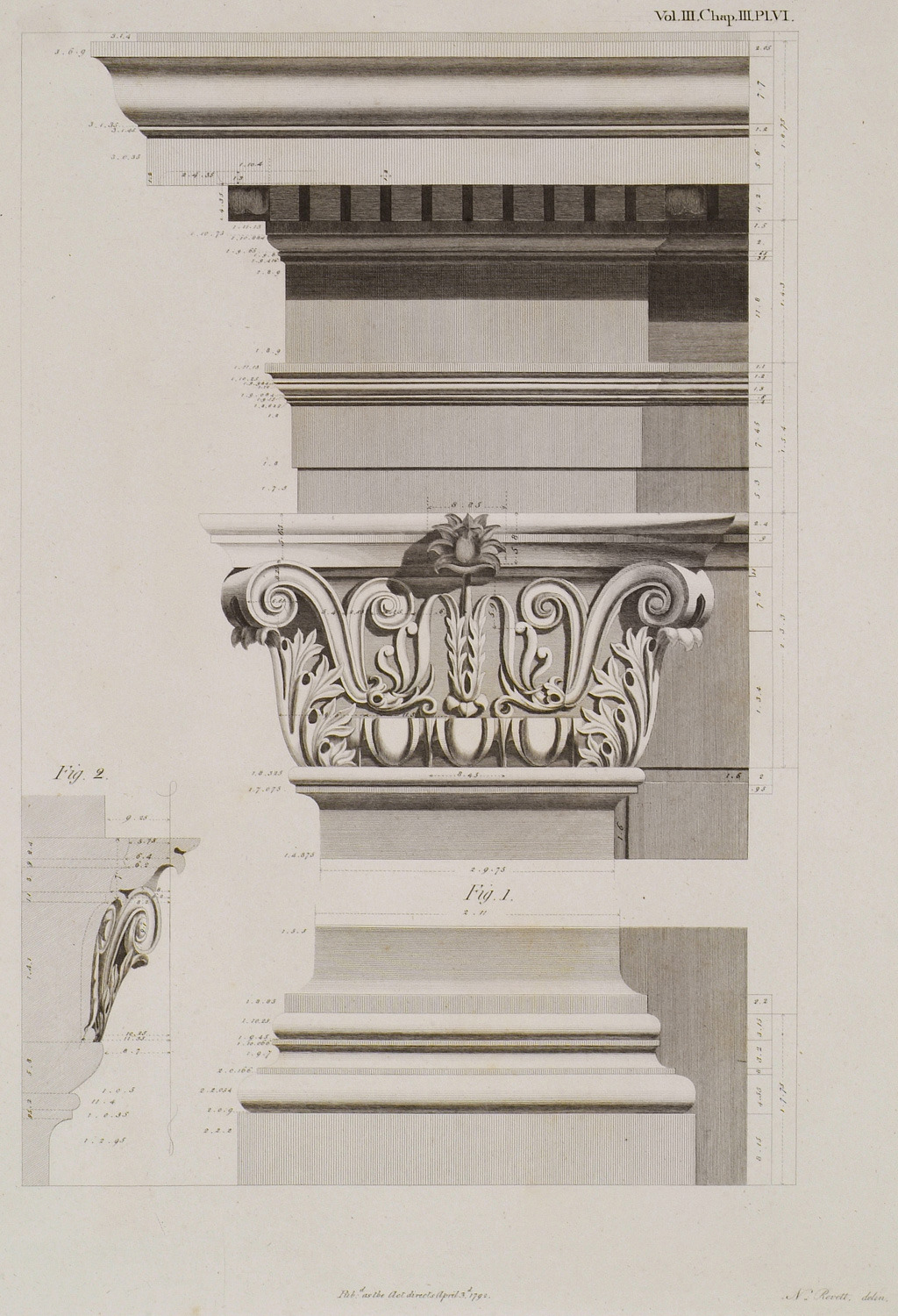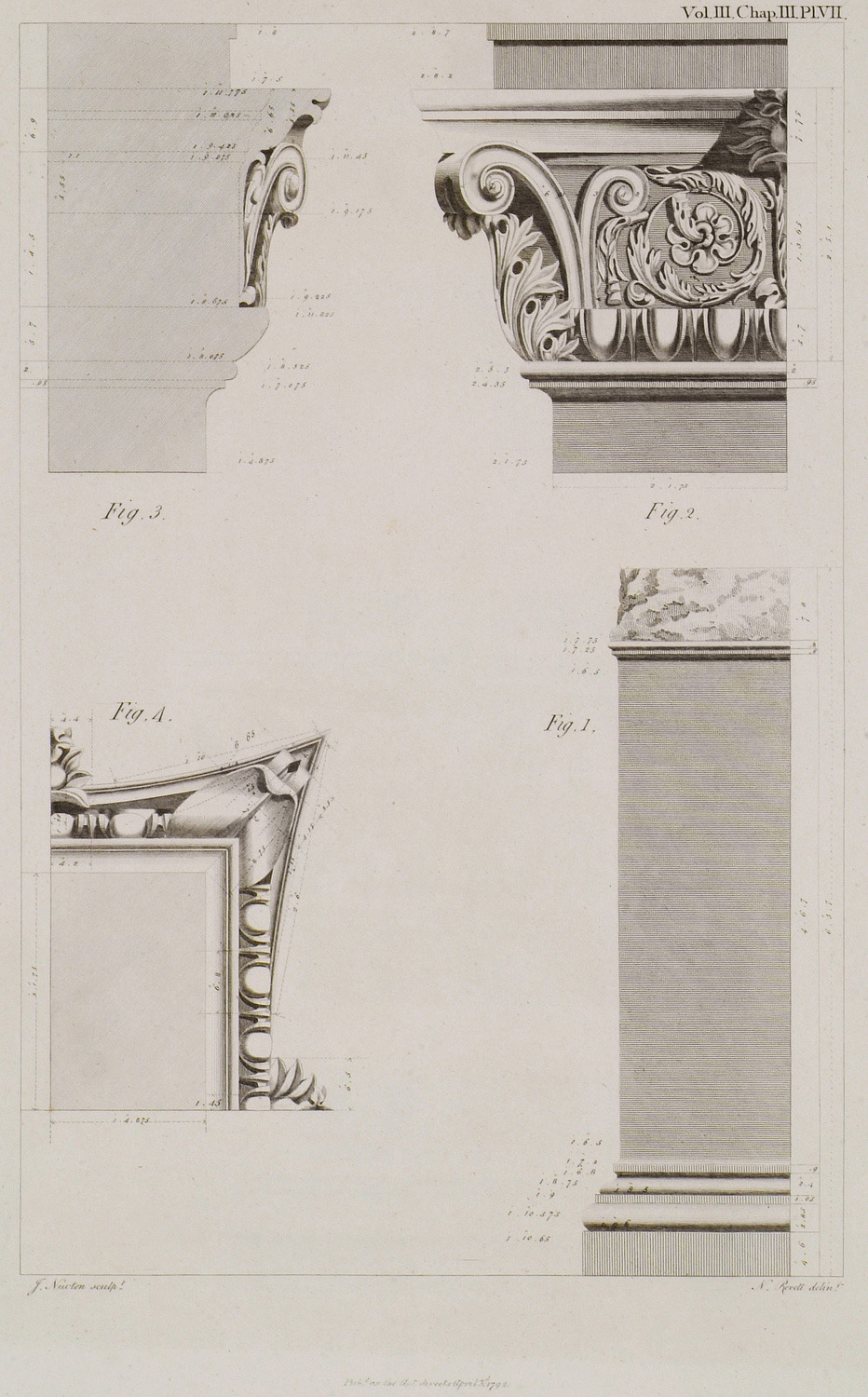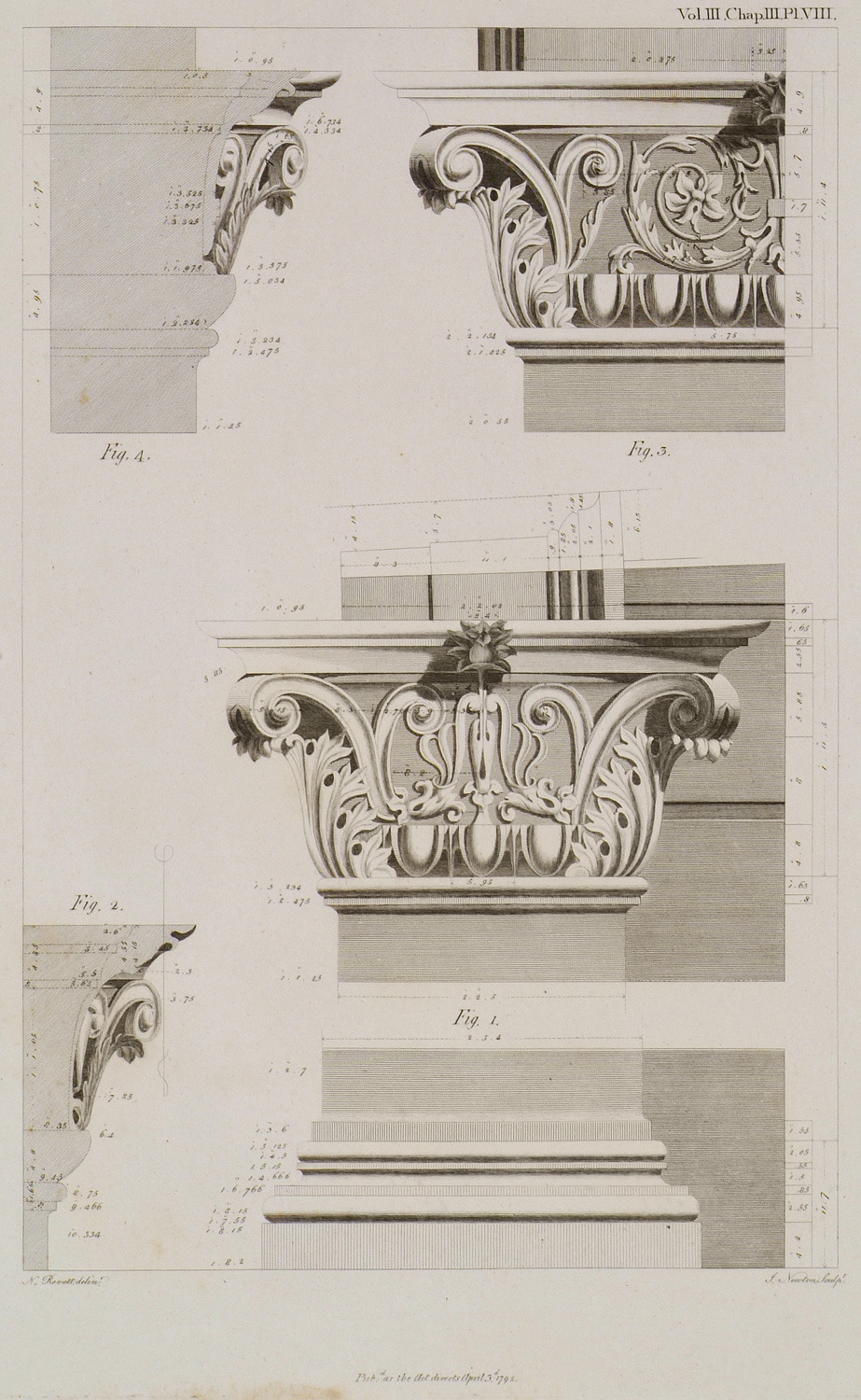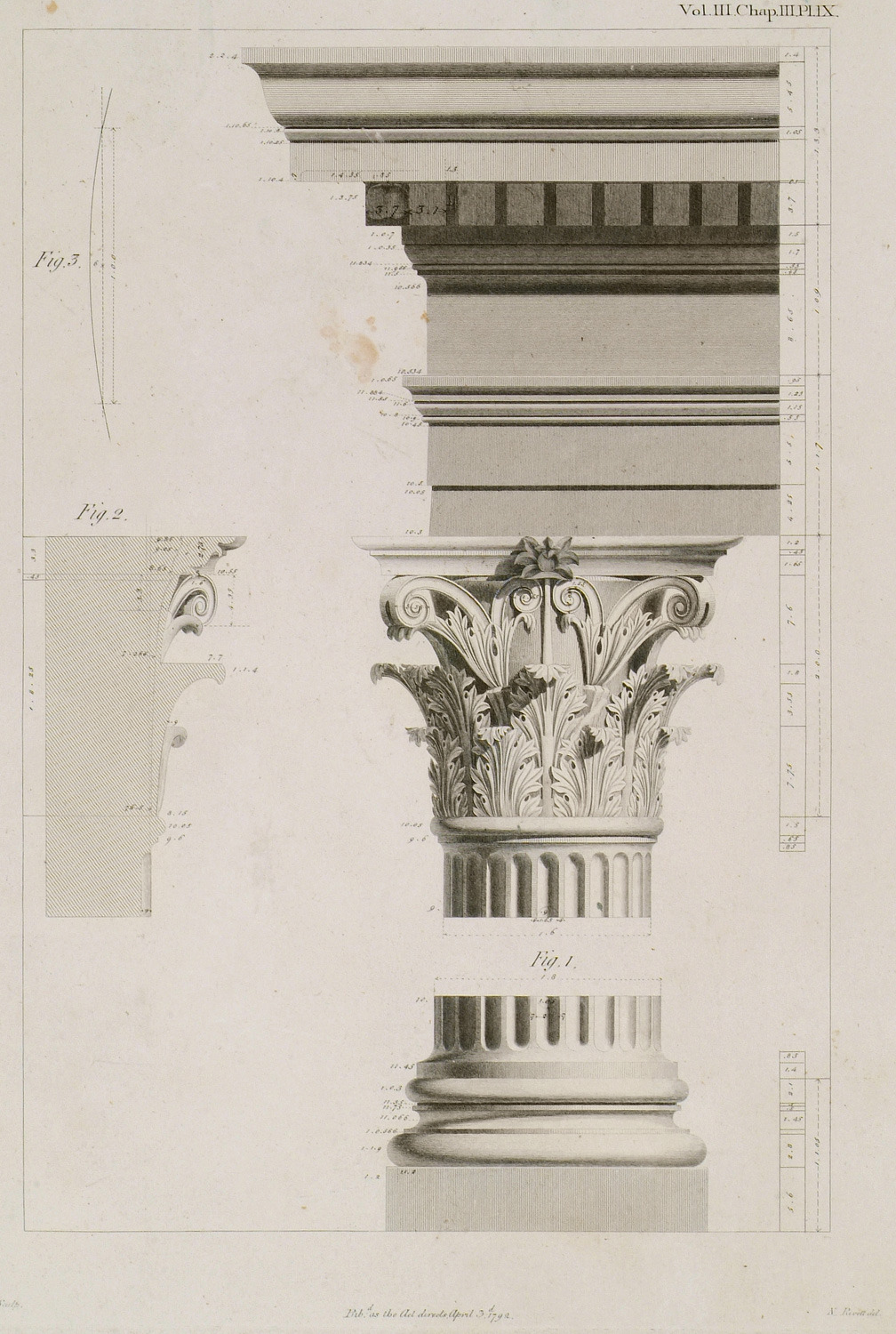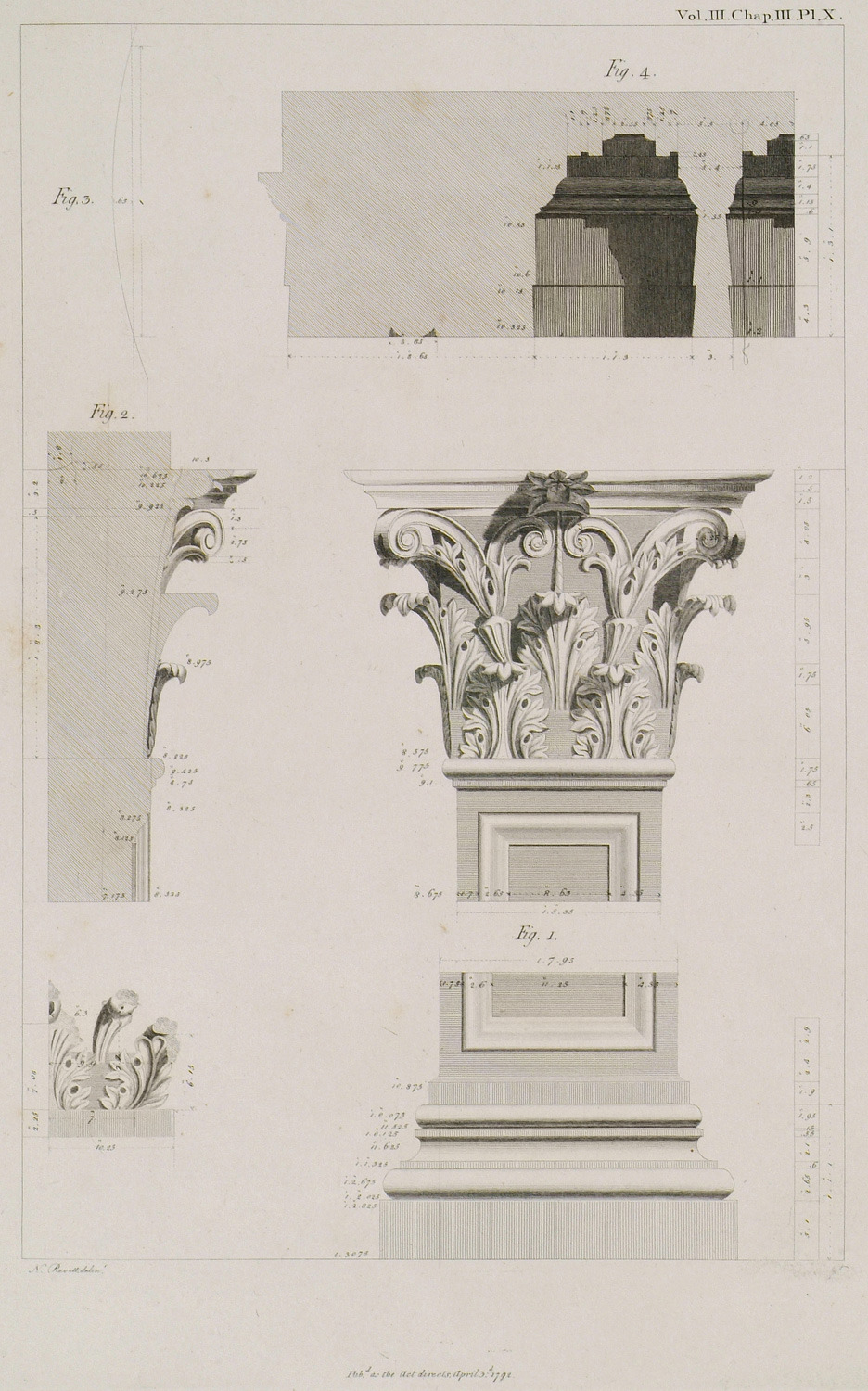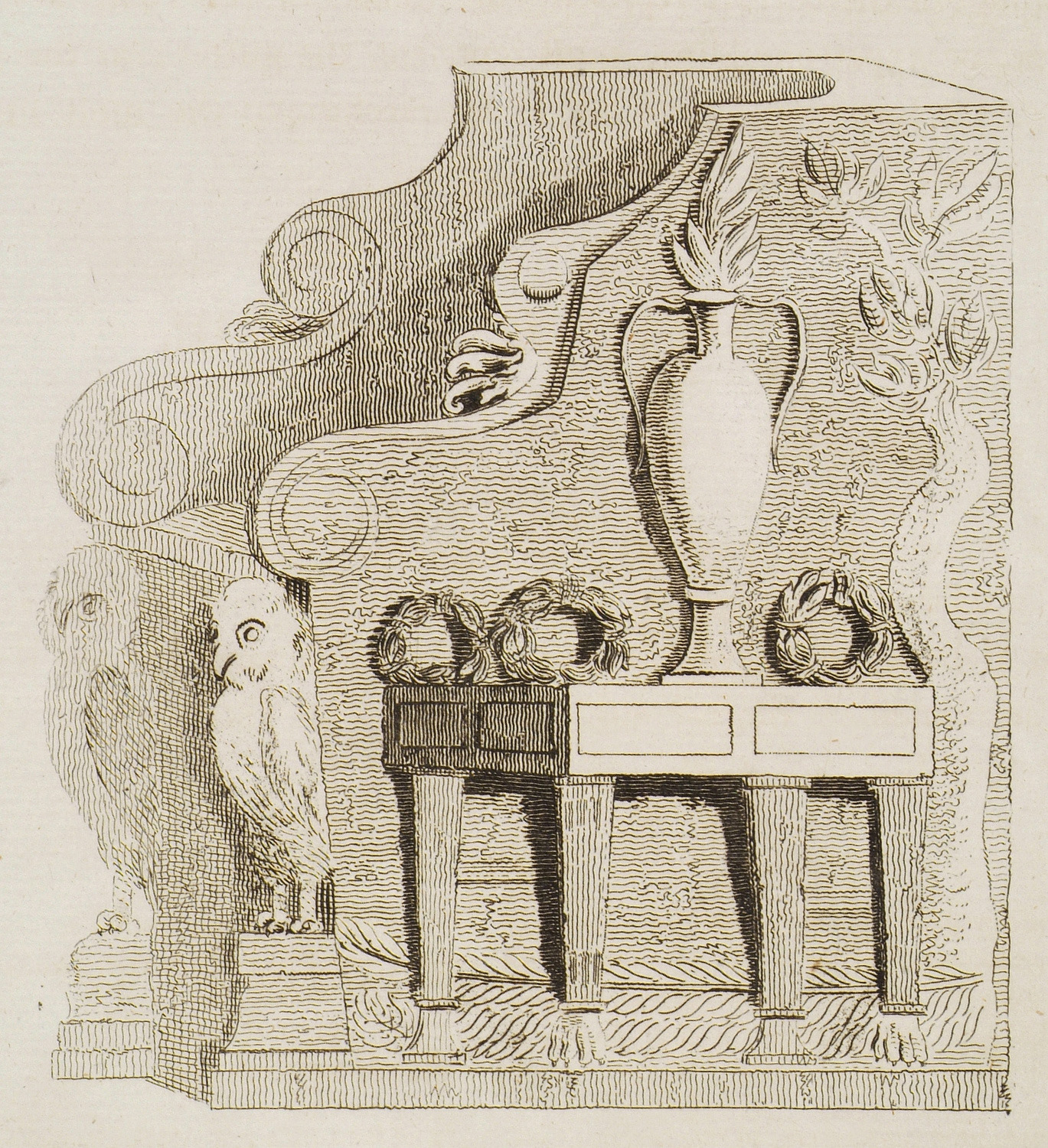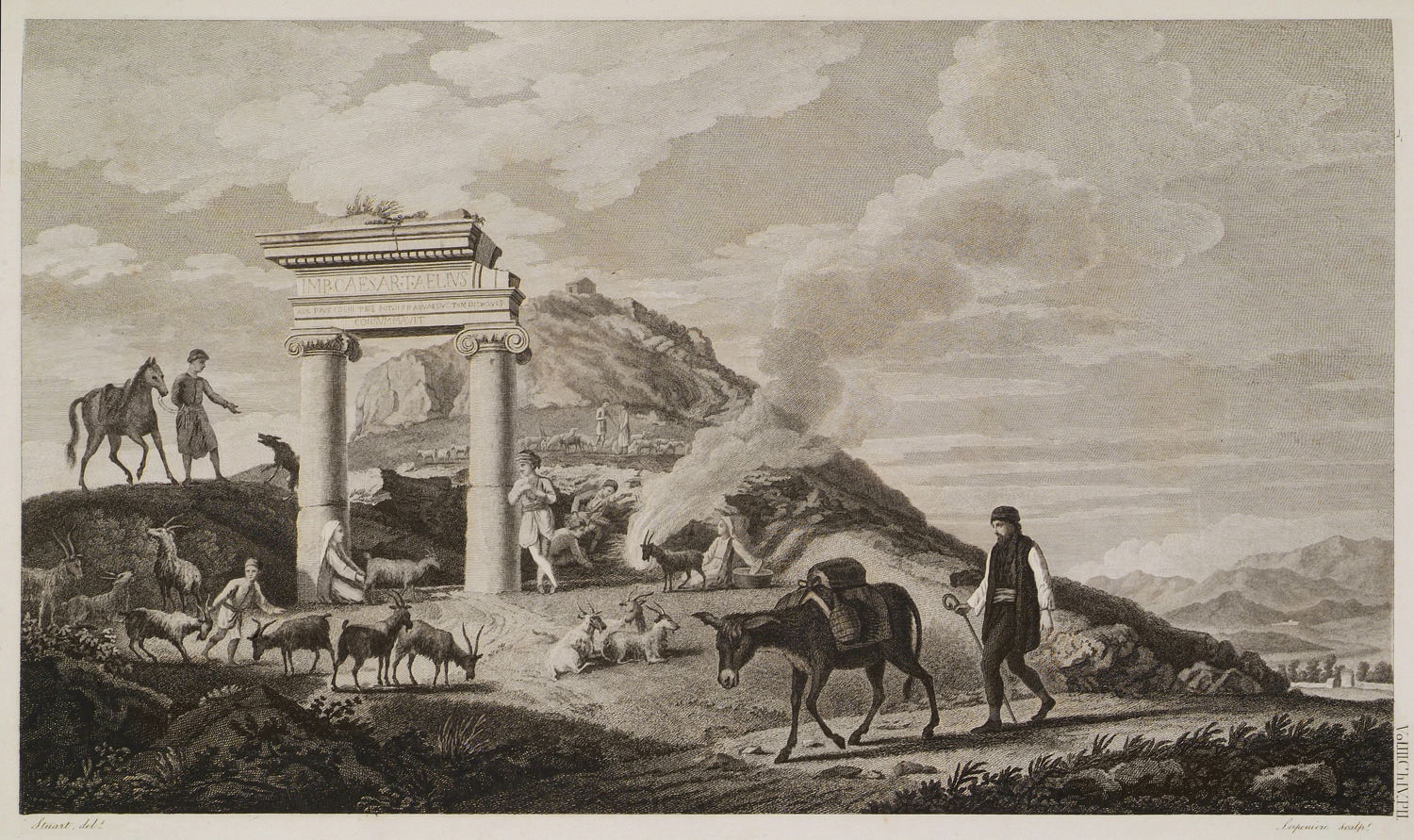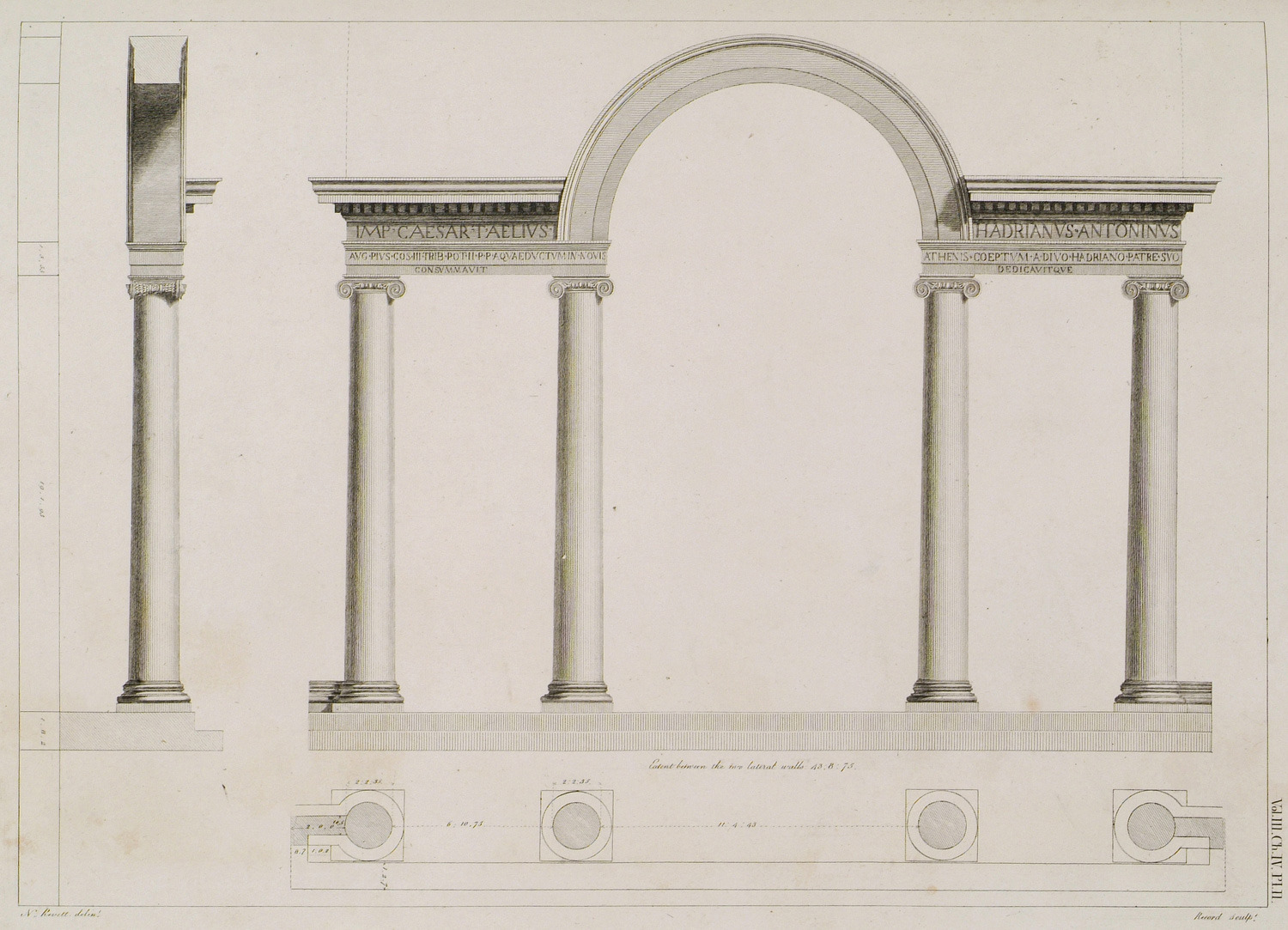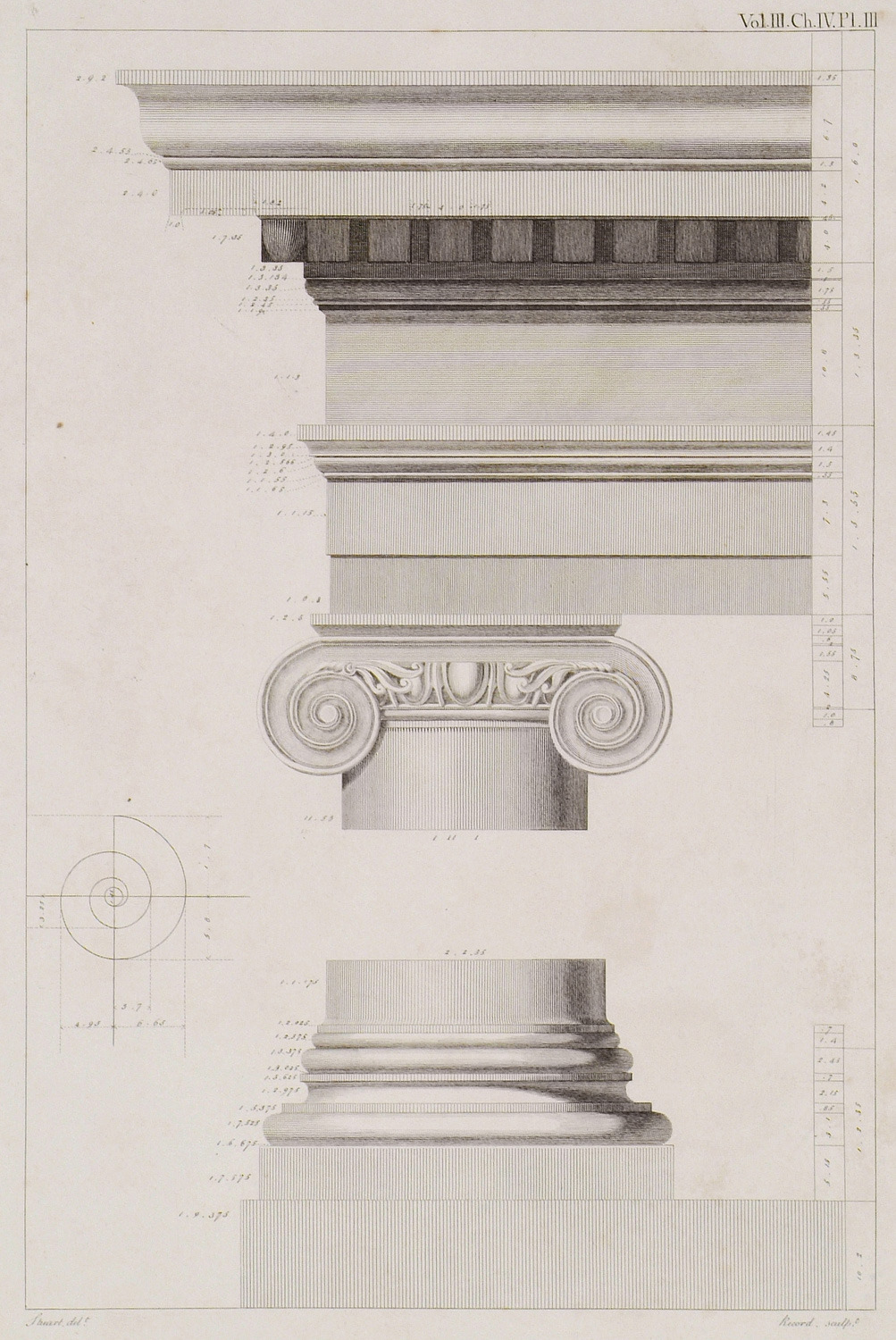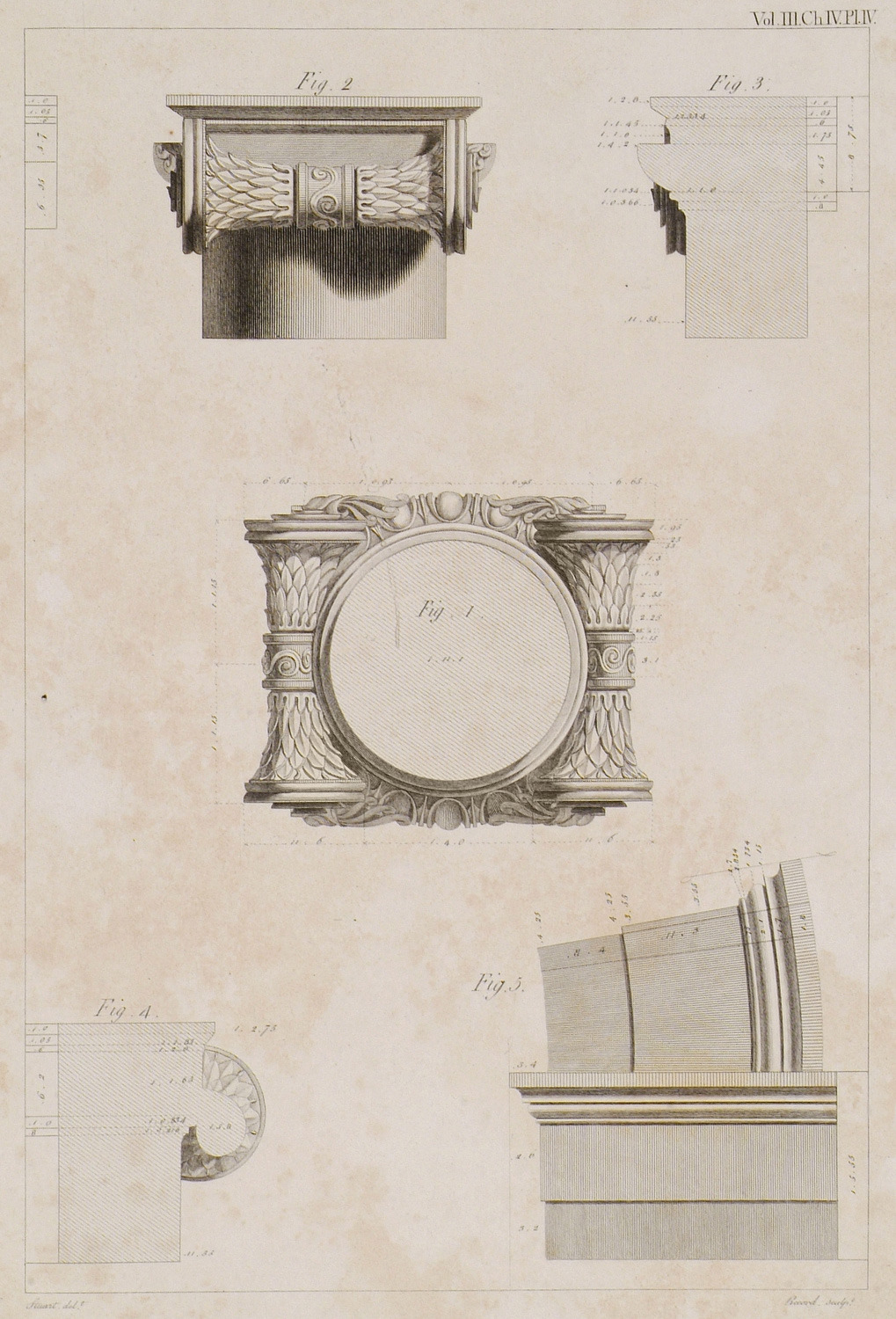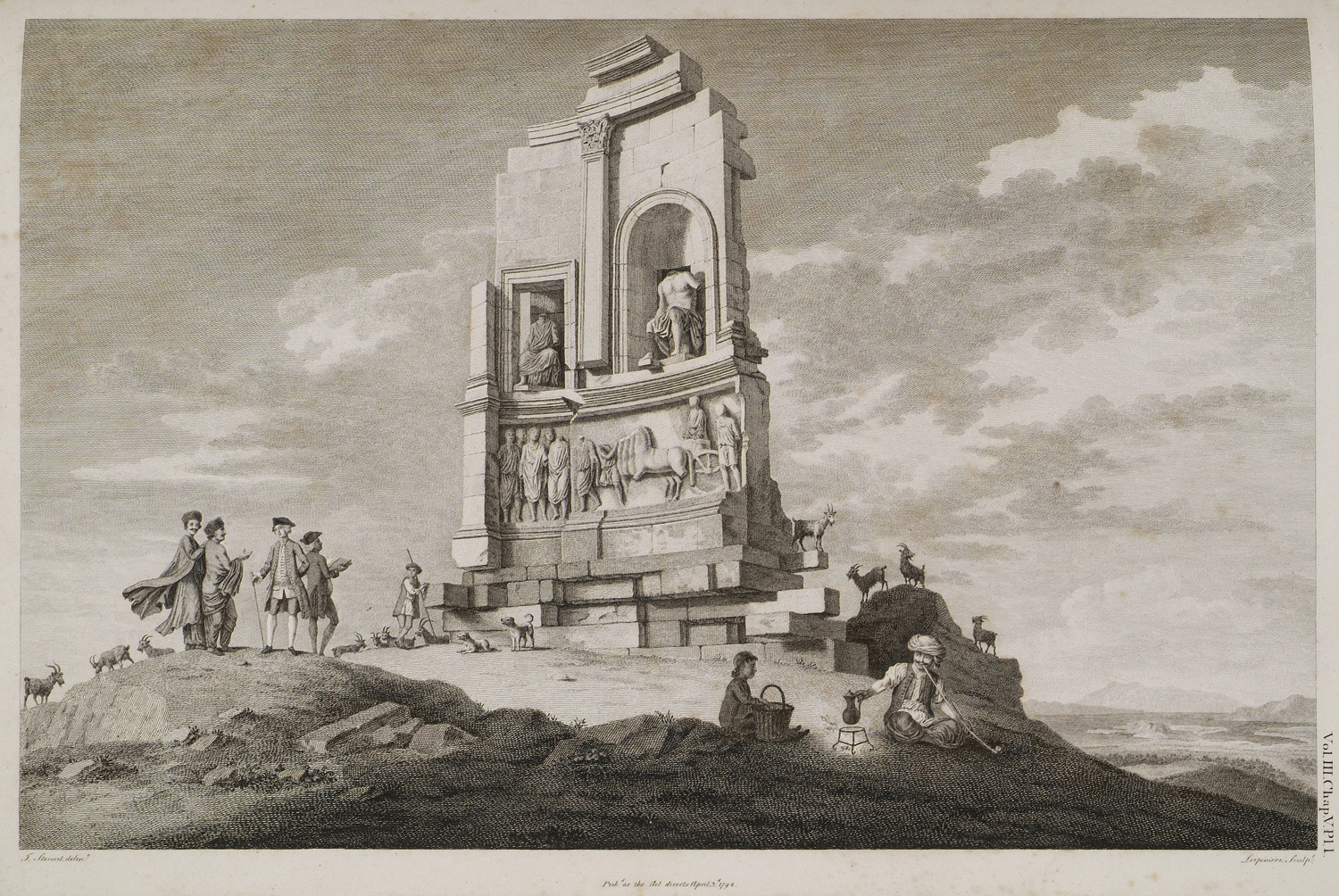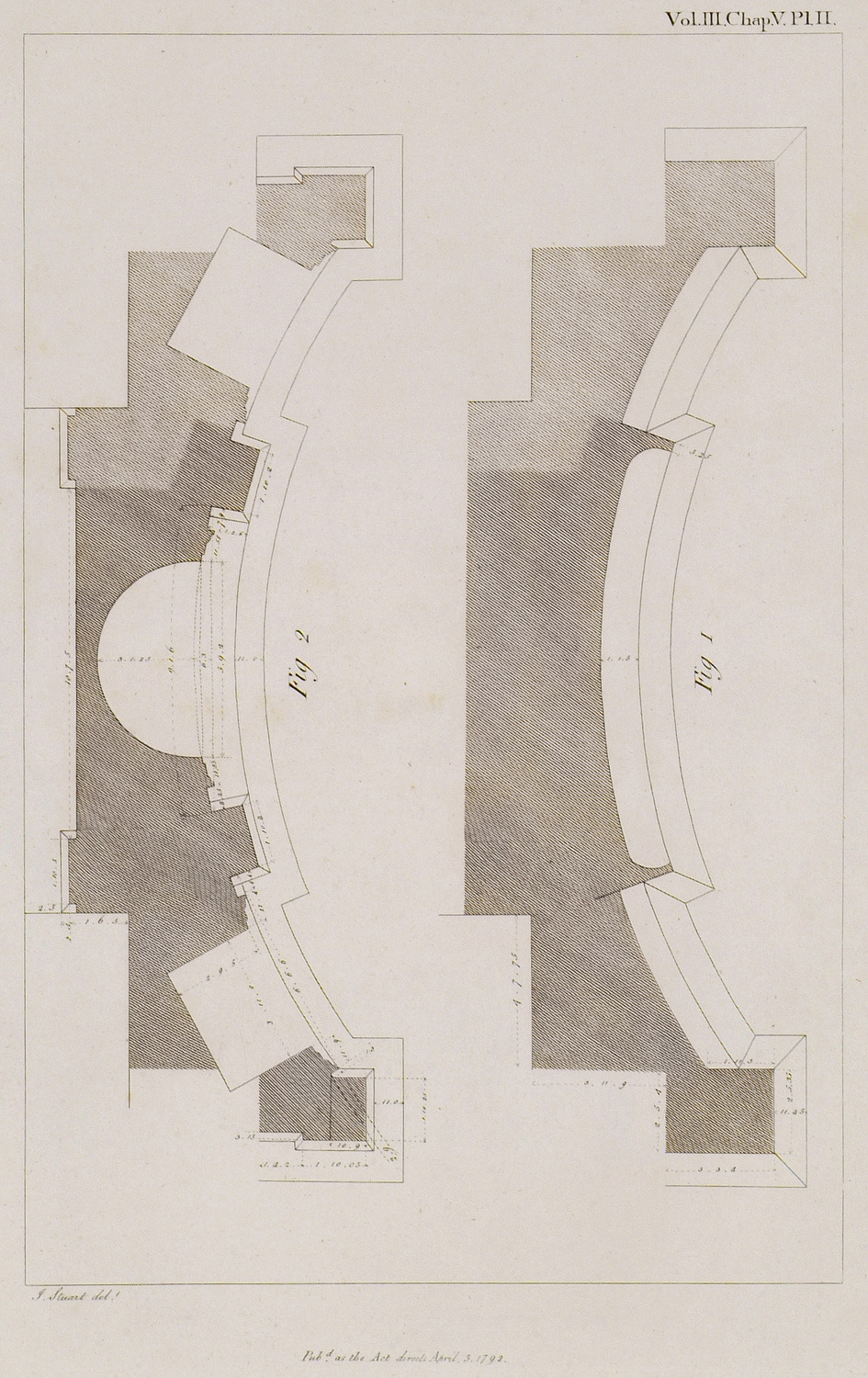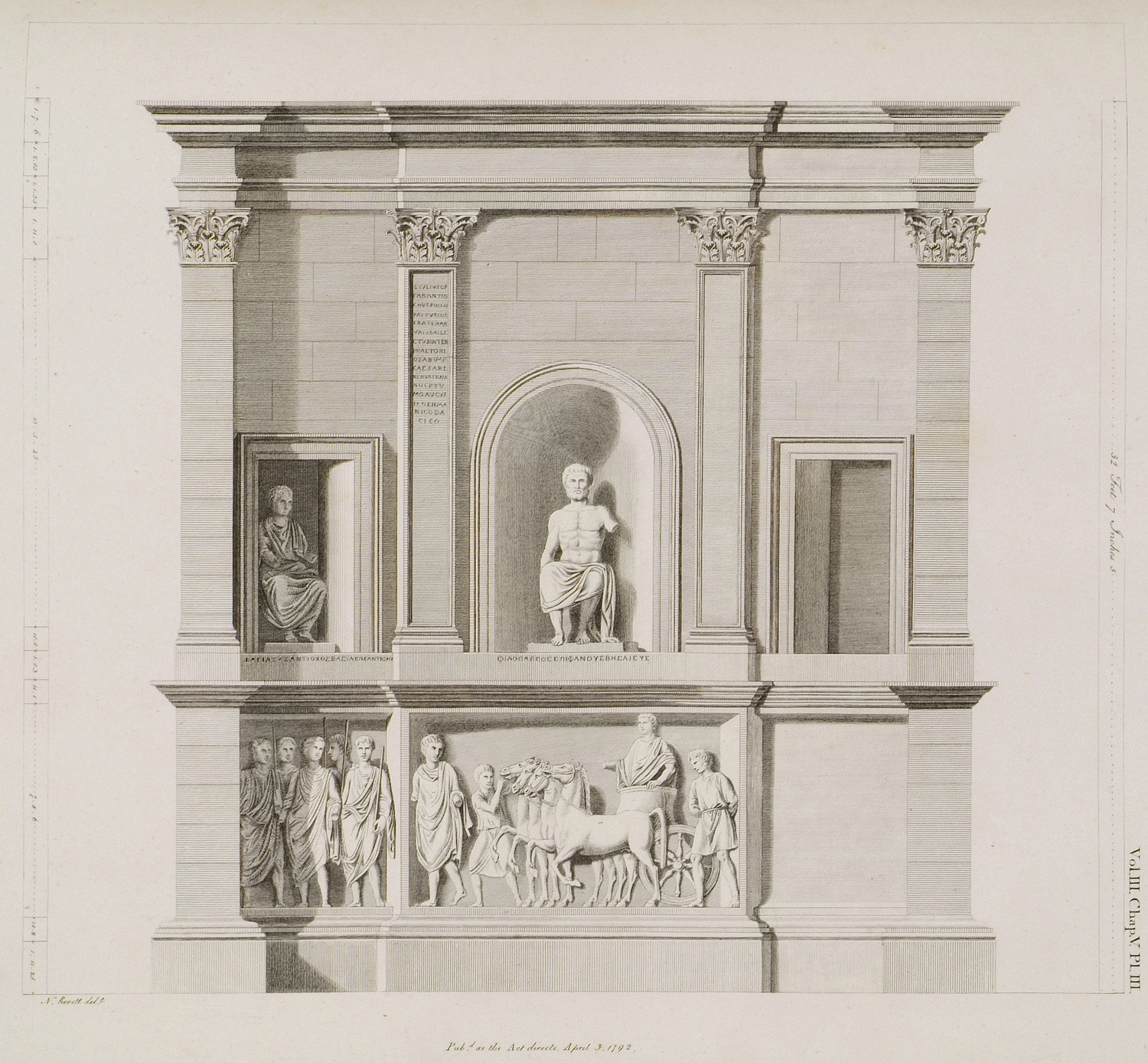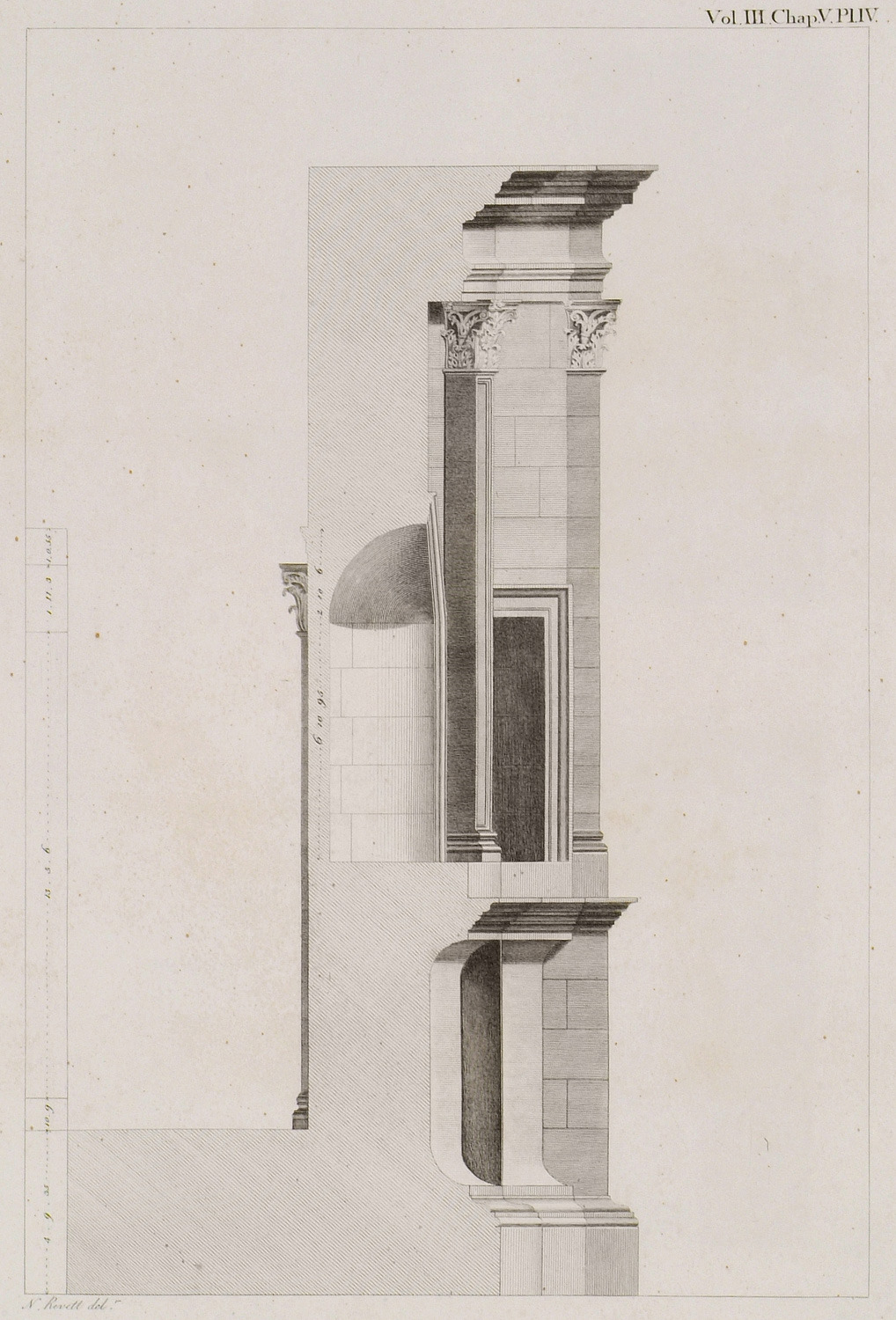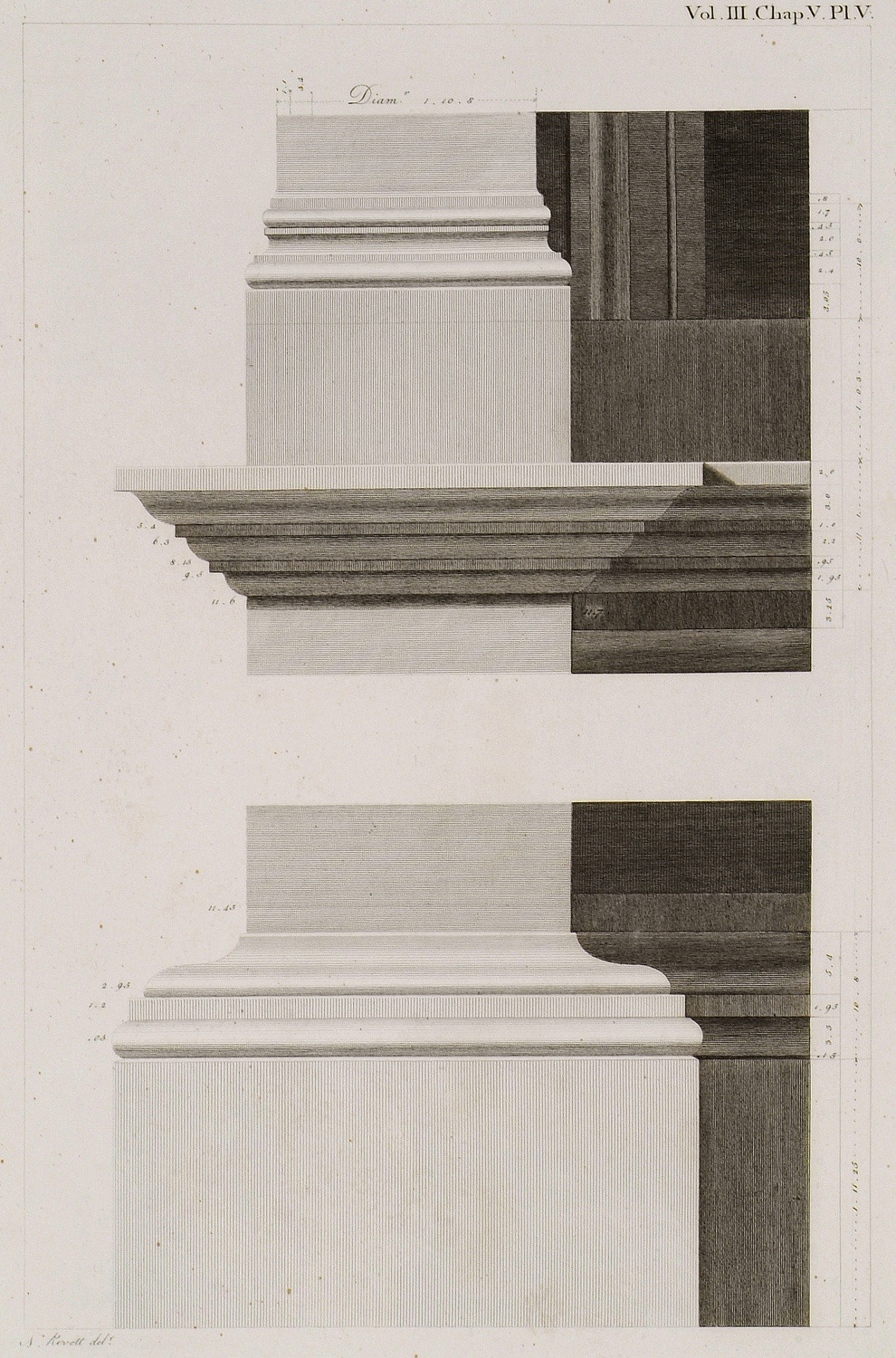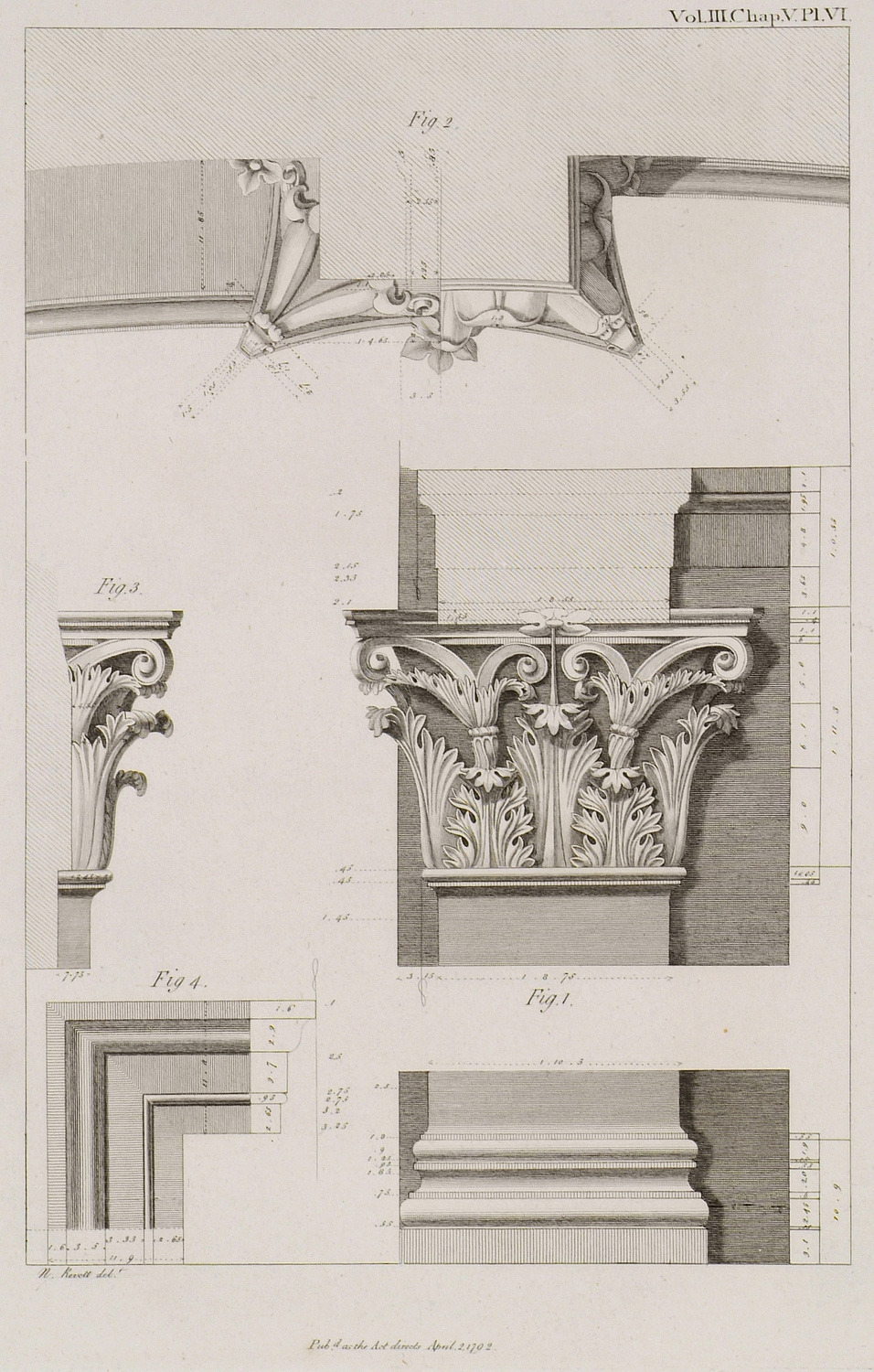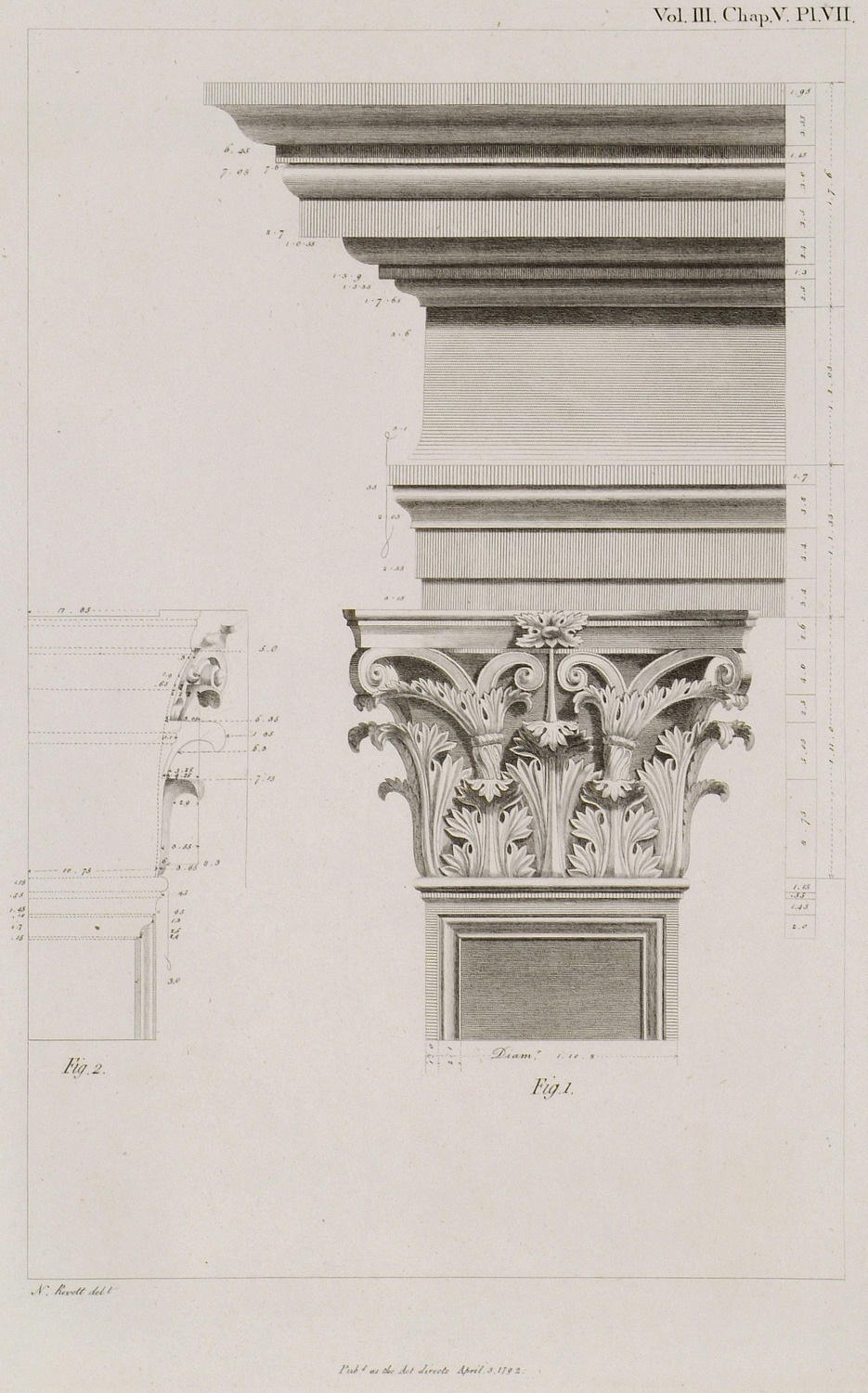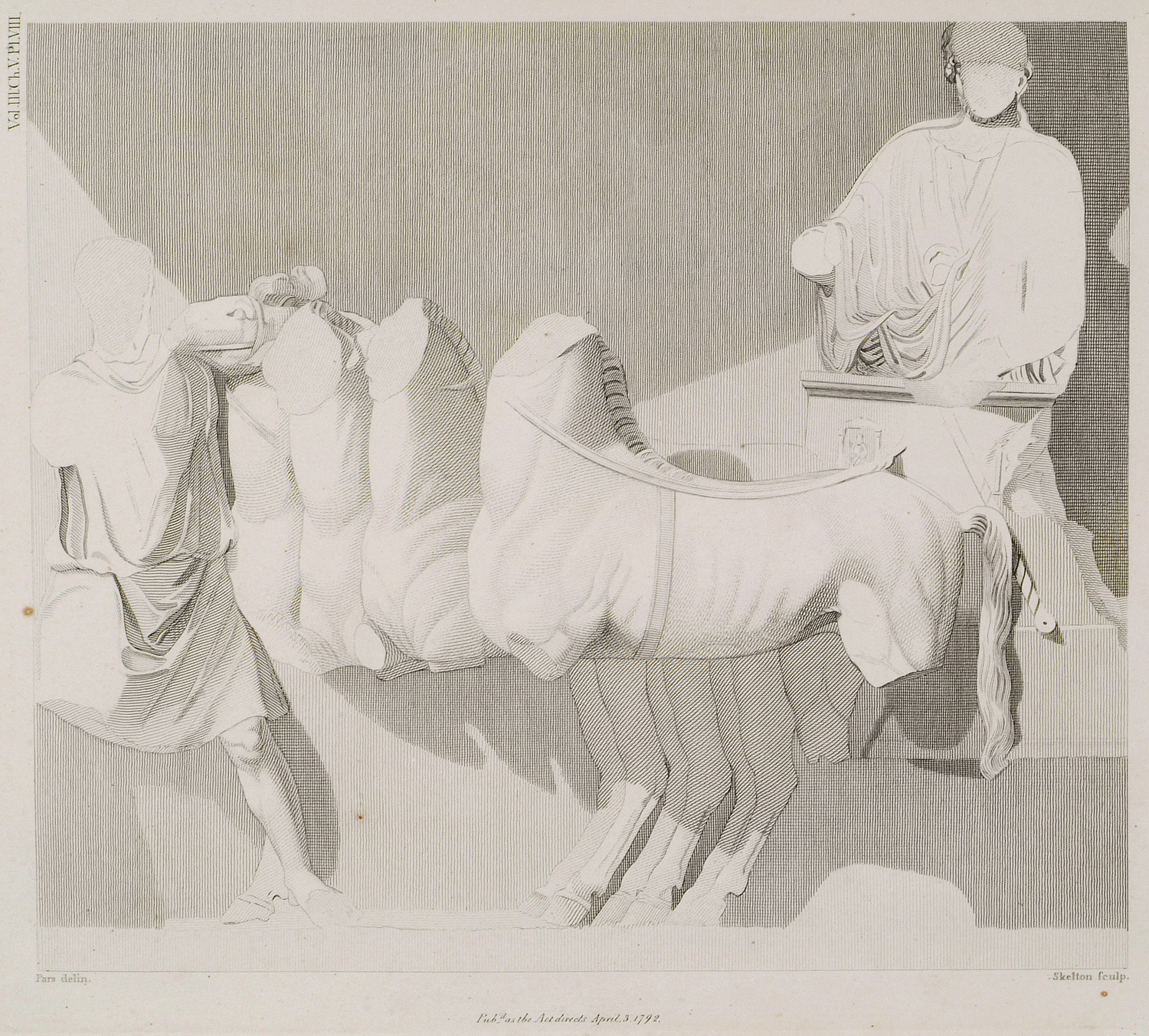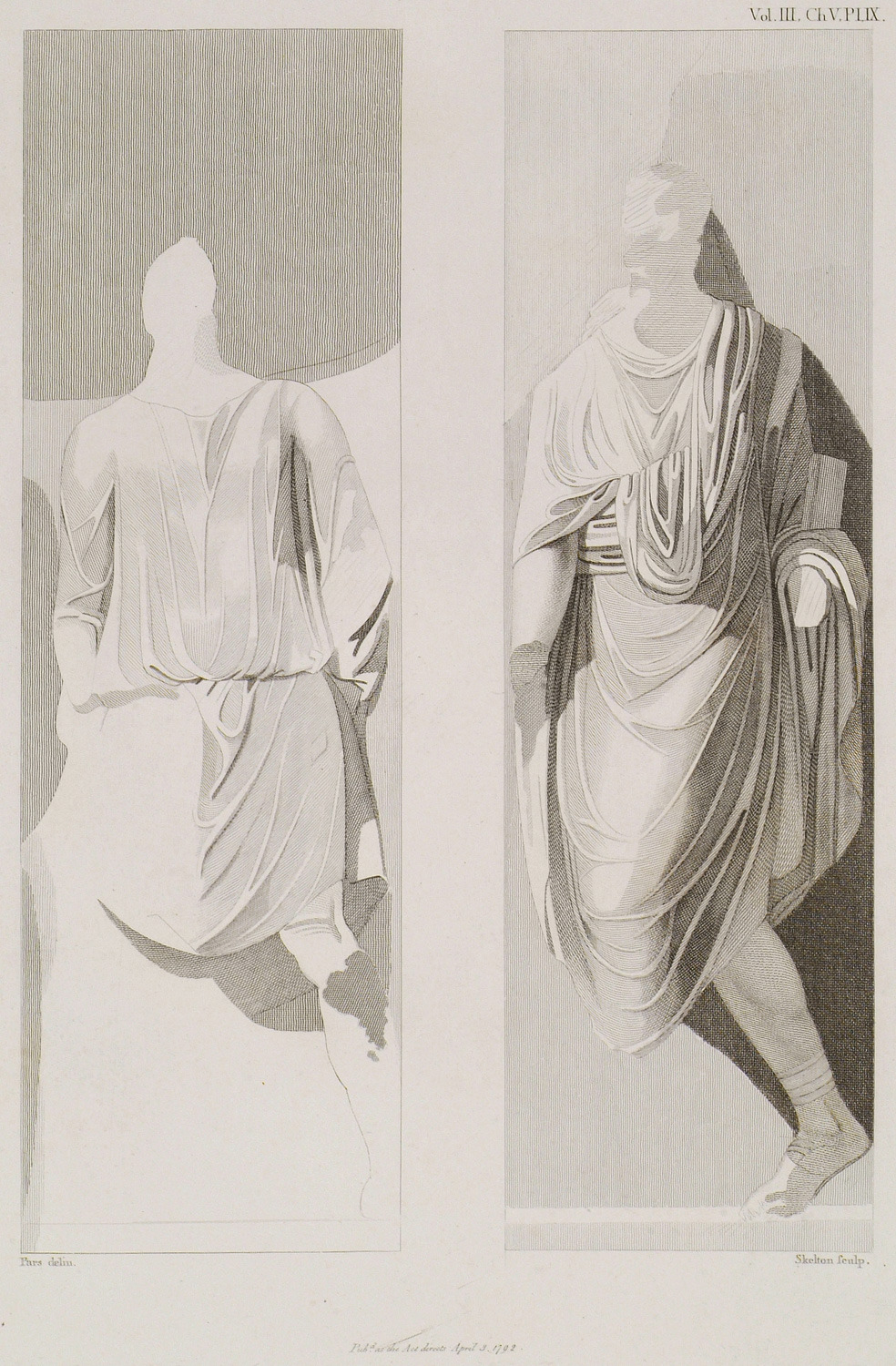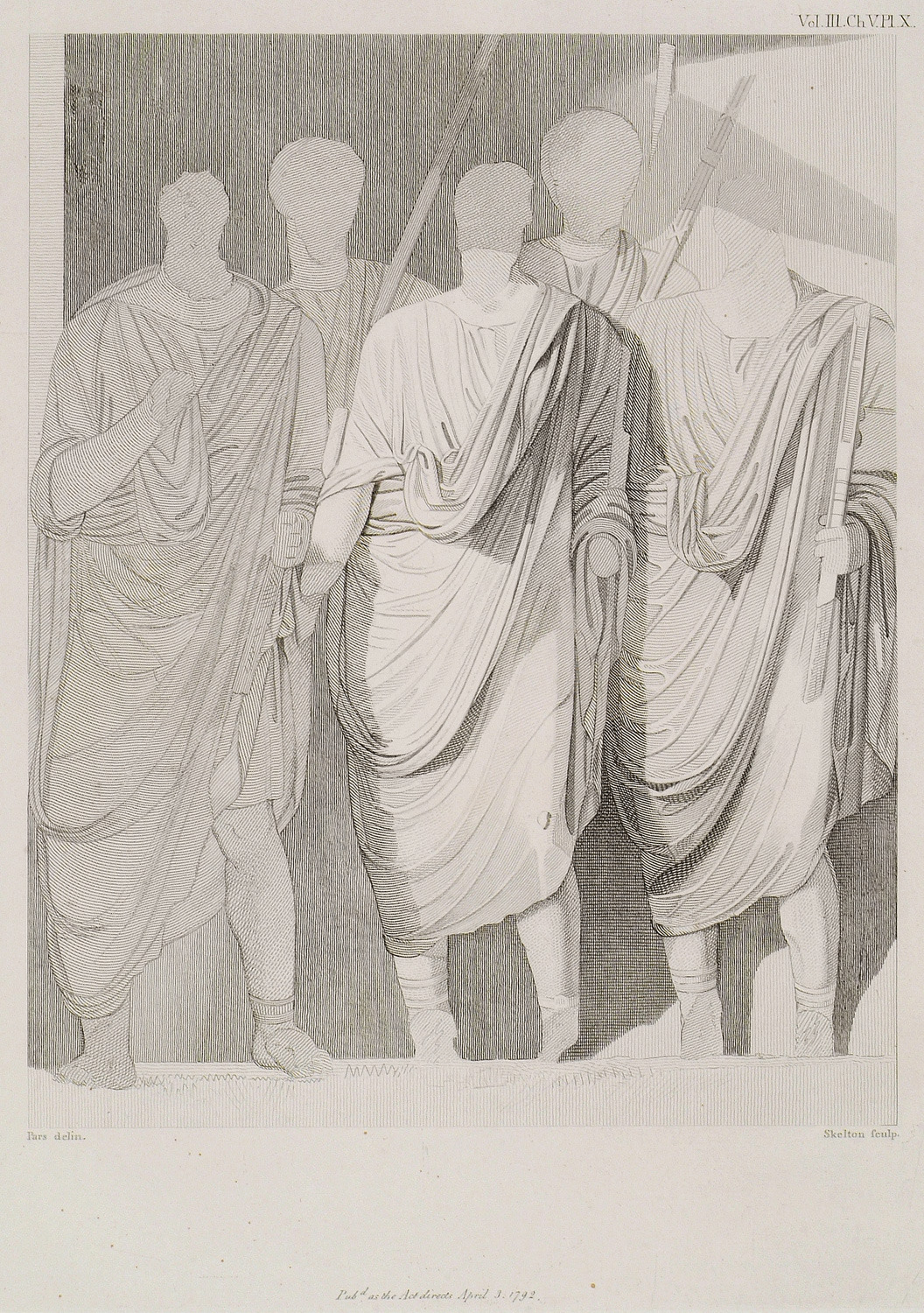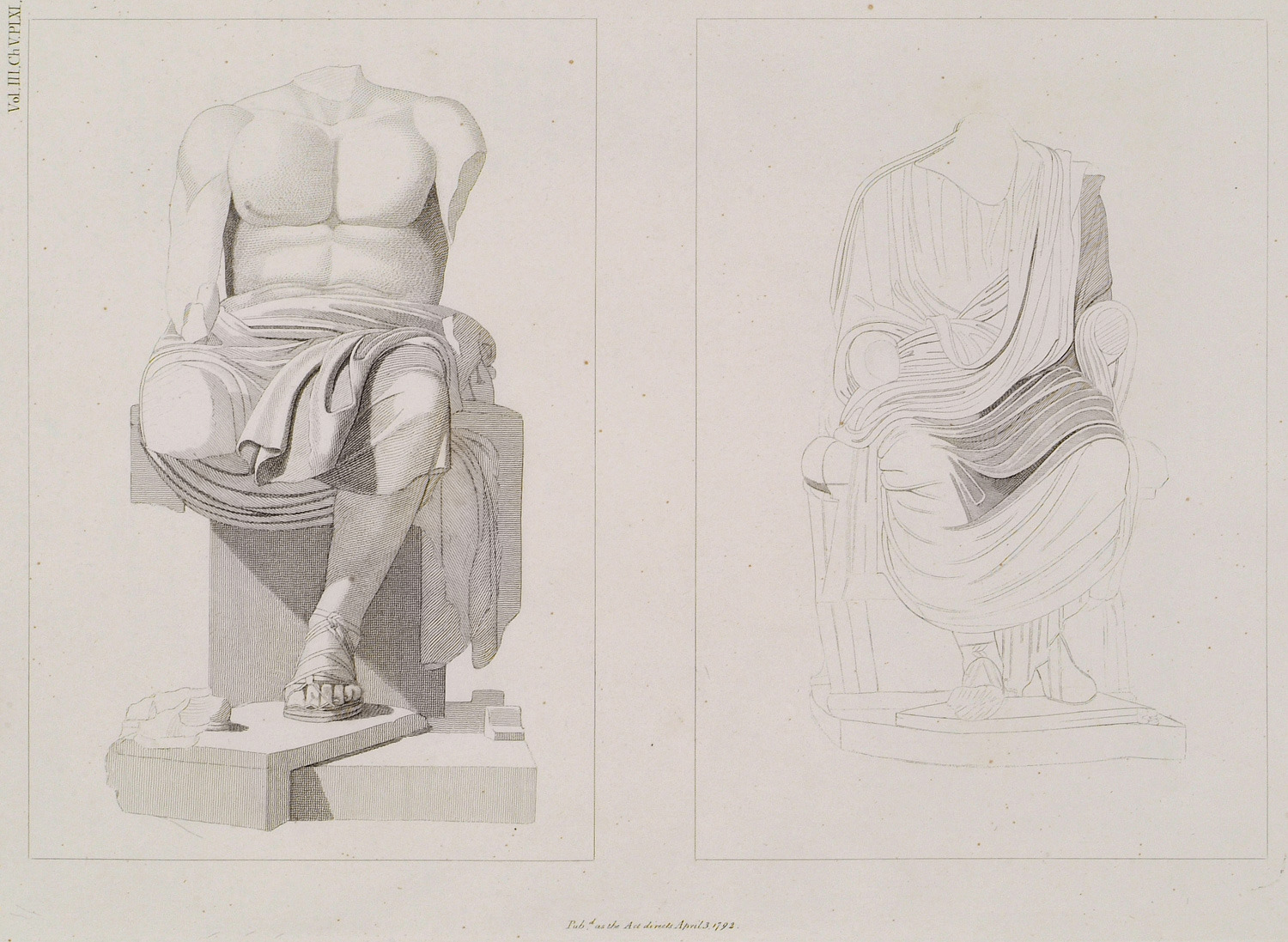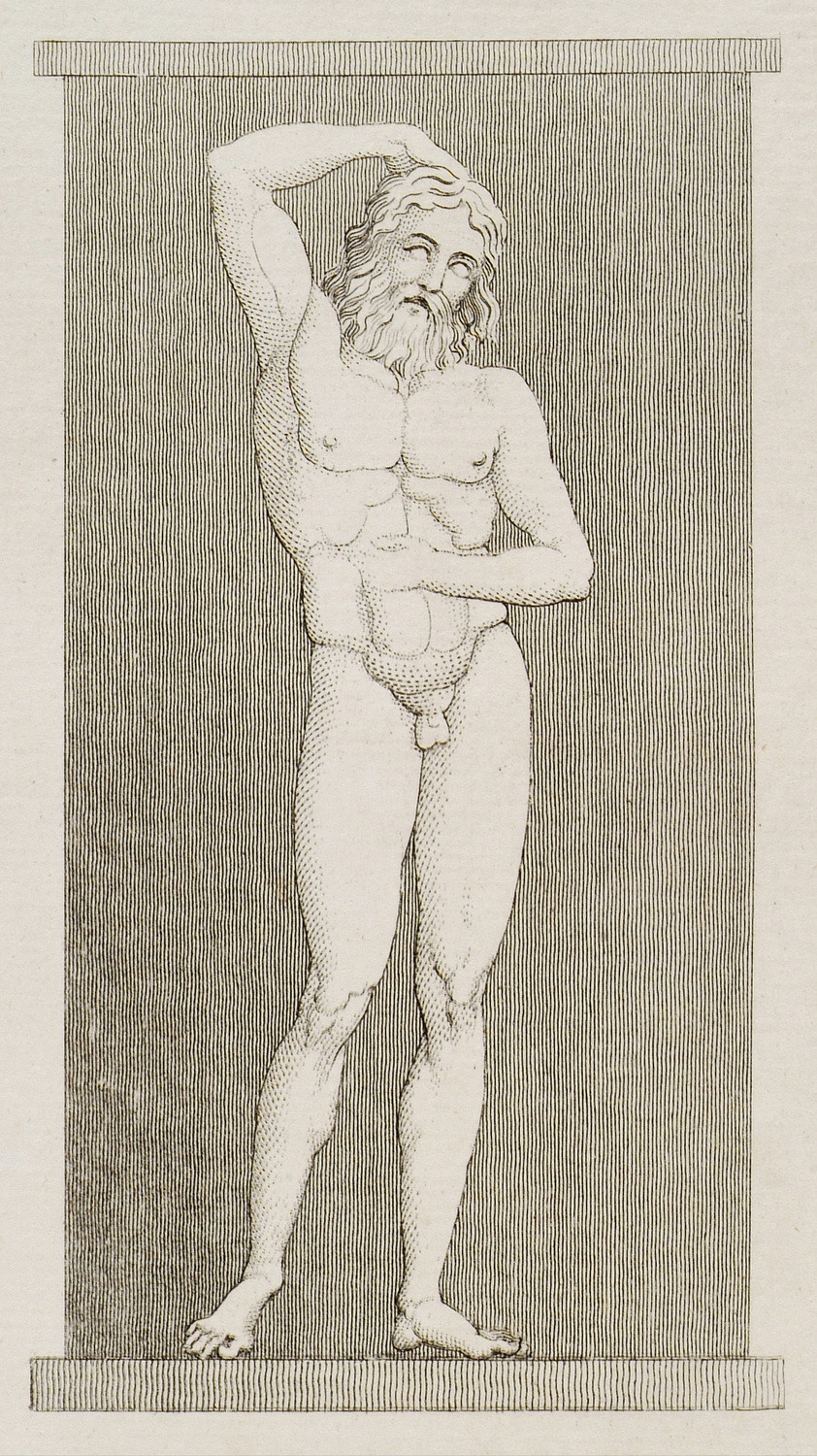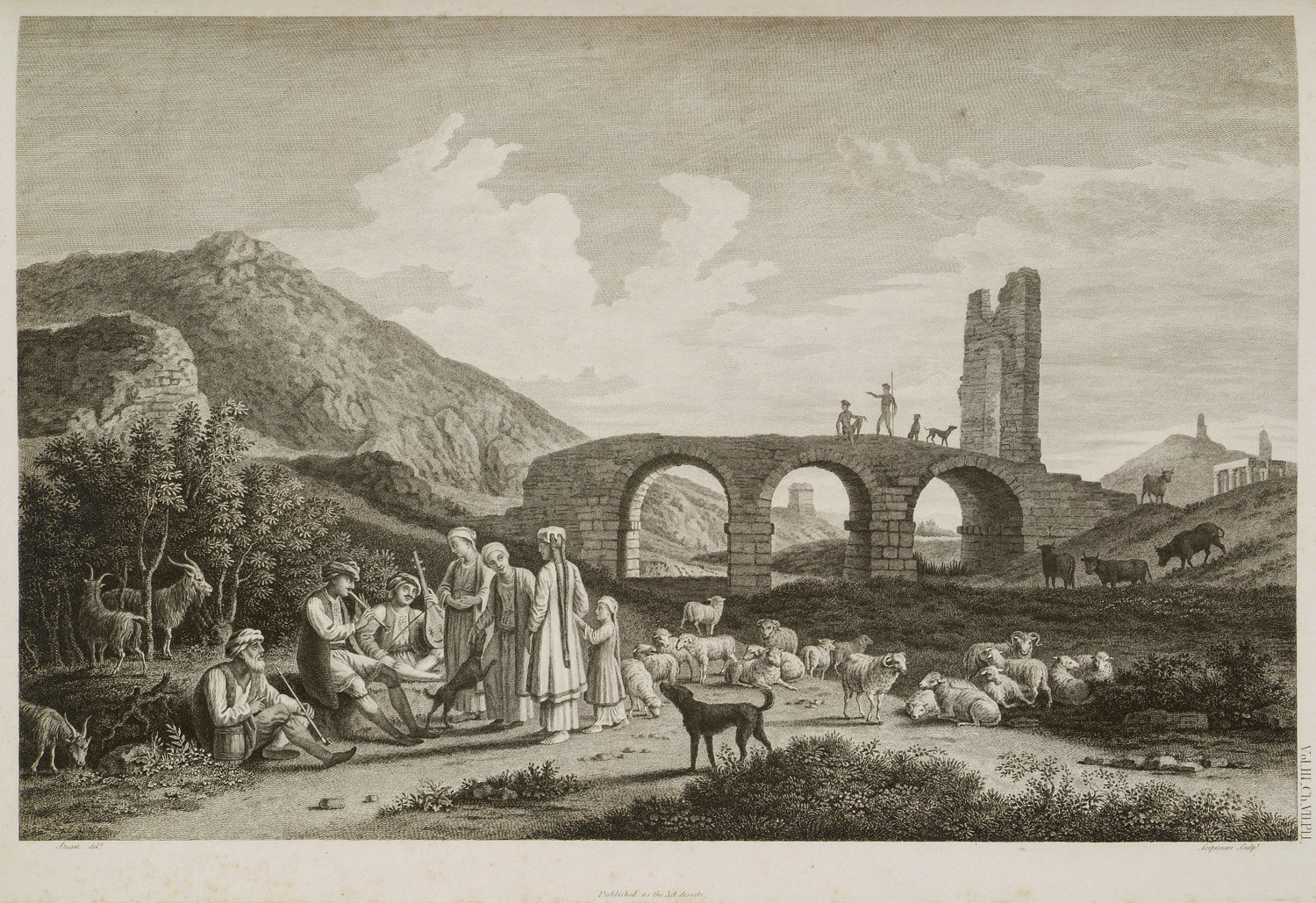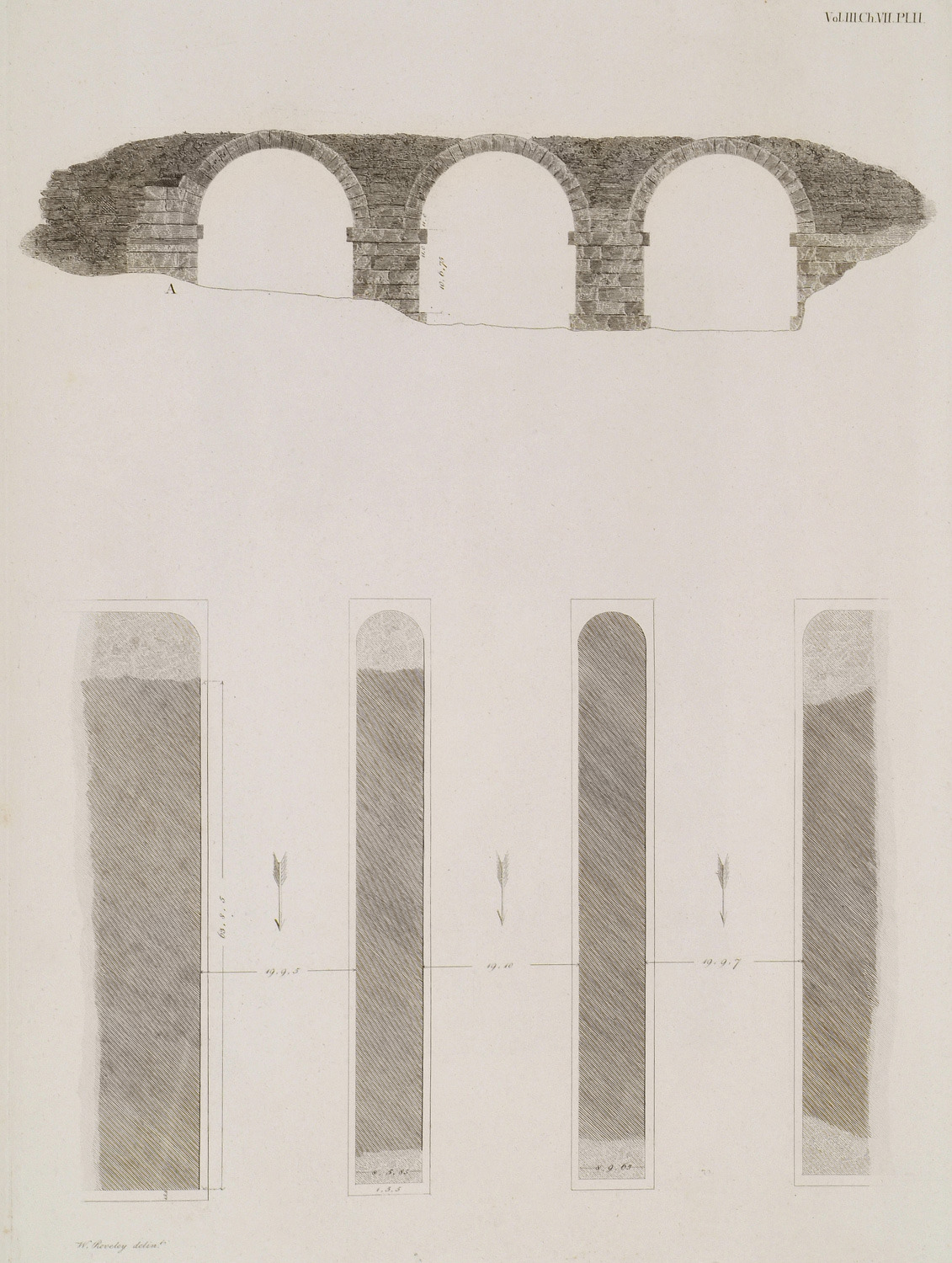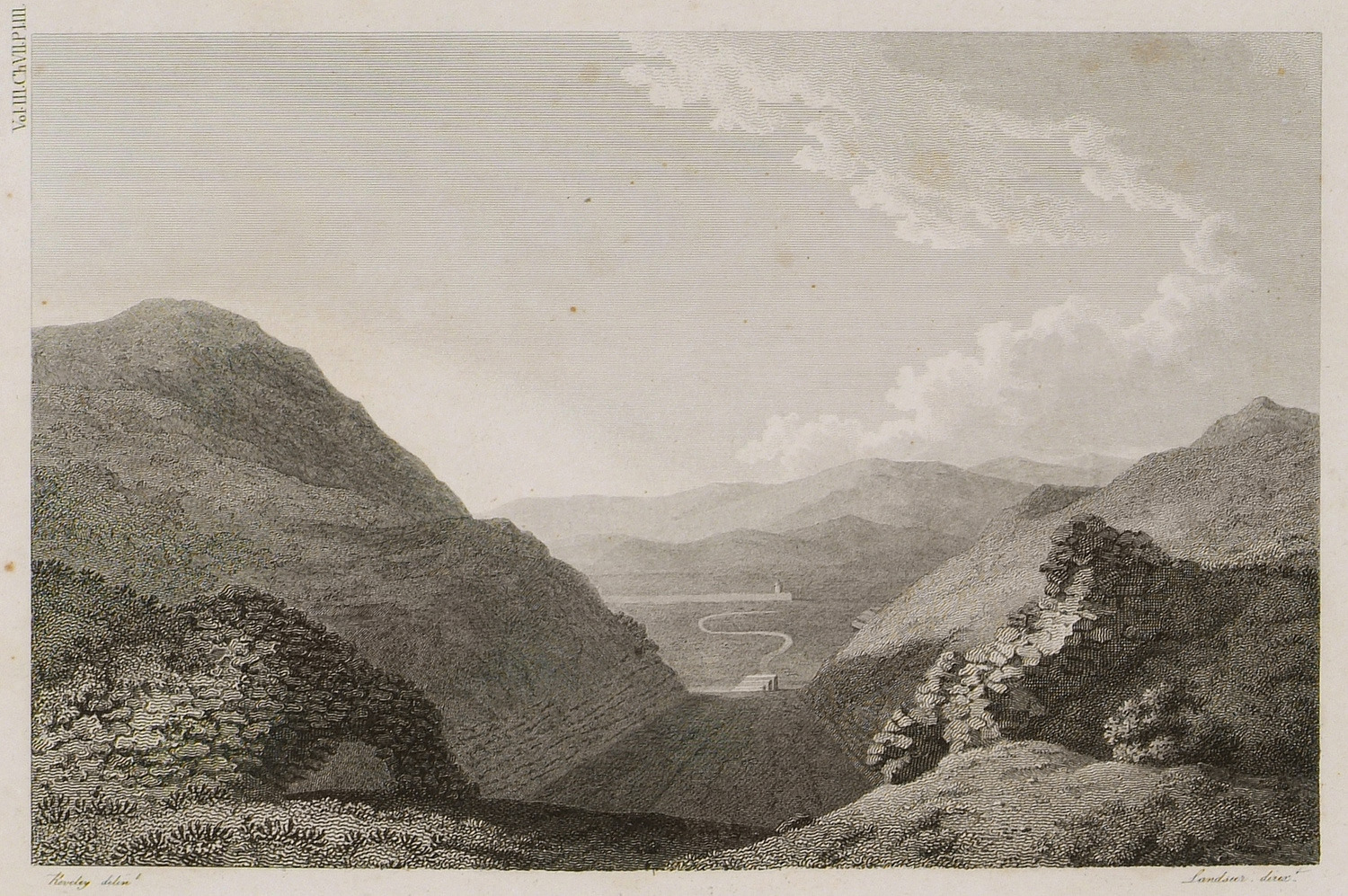Athens (1524 Subjects)
Plan of the upper part of the Arch of Hadrian, Athens.
The Arch of Hadrian, Athens: Elevation of the fronts facing the south-east.
The Arch of Hadrian, Athens: Fig. 1. Section through the centre of the arch, and of the niches. Fig. 2. Elevation of one end of the arch, showing the connection of the columns in the second order.
The Arch of Hadrian, Athens: Fig. 1. Capital and base of the antae at each extremity of the arch, with the entablature of the lower order of the building, as seen on each front. Fig. 2. A section through the front face of the capital.
The Arch of Hadrian, Athens: Fig. 1: Half the front of the pedestals in the lower order. Fig. 2: Half the front of the capital of the antae on the flank of the arch. Fig. 3: A section through the front of the capital. Fig. 4: The plan of half the front face, and half the flank face of the capital.
The Arch of Hadrian, Athens: Fig. 1: The front of the capital, and base of the antae that support the arch, with the profile mouldings of the archivolt. Fig. 2: The section through the front of the capital. Fig. 3: Half the lateral face of the capital. Fig: 4. The section of the lateral face of the capital.
The Arch of Hadrian, Athens: Fig. 1. The capital and base of the half columns in the upper order of the arch, with the entablature they support. Fig 2. Section through the capital. Fig. 3. Curve of the abacus of the capital, taken on its listel.
The Arch of Hadrian, Athens: Fig. 1. The capital and base of the Attic square columns on the upper order. Fig. 2. A section through the capital. Fig. 3. The curve of the abacus; of the capital taken upon the listel under the ovolo. Fig. 4. A section of the architrave, and lacunaria, in the soffit of the niches, with the partition between them, which still remains as low as to the bottom of the capitals. Fig. 5. Half the flower upon the apex of the pediment, in its present state.
Ancient sling pellet and arrows from the bed of ilissus.
Ancient marble seat from Athens.
Remains of the portico of the reservoir of the Aqueduct of Hadrian (Dexameni) at the foot of Lycabettus hill. Dairy farm belonging to Arvanites. A woman is milking her goat to make kaymak. A man has come on horseback to buy dairy products. A monk of Hagioi Asomatoi monastery is going to town with his donkey which is carrrying olives and wine. Mount Hymettus and Kaisariani monastery in the background.
Aqueduct of Hadrian (Dexameni), Athens: The plan, elevation and section of this frontispiece.
Aqueduct of Hadrian (Dexameni), Athens: The base, capital and entablature of this building.
Aqueduct of Hadrian (Dexameni), Athens: Fig. 1. The capital reversed. Fig. 2. The side of the capital. Fig. 3. The section through the front of the capital. Fig. 4. The section through the side of the capital. Fig. 5. The mouldings of the architrave and of the arch.
The monument of Philopappus in Athens. James Stuart, Nicholas Revett, James Dawkins and Robert Wood are studying the monument. The Janissary who escorts them is preparing coffee. A shepherd with his goats. The Saronic gulf in the background.
Monument of Philopappus, Athens: Fig. 1: Plan of the basement. Fig. 2: Plan of the part decorated with pilasters and niches.
Reconstruction of the Monument of Philopappus in Athens.
Monument of Philopappus, Athens: A transverse section through the middle of the monument.
Monument of Philopappus, Athens: The mouldings of the basement, with the base of the Corintihian pilasters.
Monument of Philopappus, Athens: Fig. 1. The base, capital and architrave of the pilaster, in the back front. Fig. 2. The plan of the capital reversed. Fig. 3. The profile of the capital. Fig. 4. The mouldings of the niches in the curved front.
Monument of Philopappus, Athens: Fig. 1. The capital and entablature of the curved or principal front. Fig. 2. Section of the capital.
Monument of Philopappus, Athens: The central part of the basso relievo under the middle niche; Philopappus is proclaimed consul of Athens.
Monument of Philopappus, Athens: Philopappus is proclaimed consul of Athens.
Monument of Philopappus, Athens: Philopappus is proclaimed consul of Athens.
Monument of Philopappus, Athens: Philopappus is proclaimed consul of Athens.
Fragment from church in Athens.
Relief showing an athlete, Athens.
View of Ilissus river and the partialy destroyed bridge which led to the Panathenaic Stadium. A group of shepherds with their flock prepare to spend the night at the site.
Plan of the Roman bridge over Ilissus, with the elevation of it next to the south west.
View of the Stadium Panathenaicum, taken as standing upon the elevated part of the circular end, which is next to the south, and looking down upon it.


